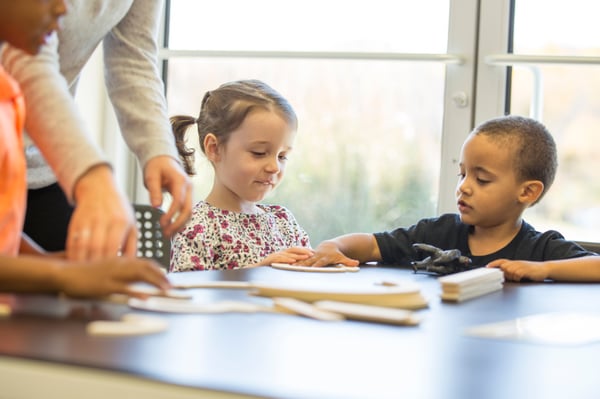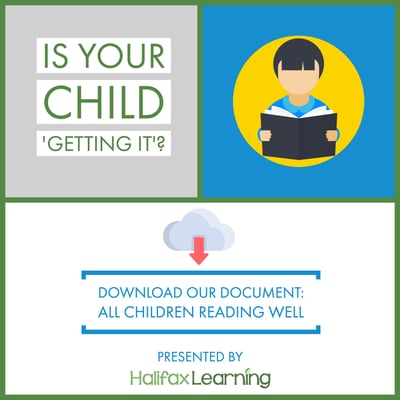What is Morphology?
What is Morphology? We invited PhD candidate, Kendall Kolne, to answer some questios about morphology and how it related to reading development. You may be more familiar with this concept than you think!
In February 2018 we were fortunate to meet Kendall Kolne, a PhD student in the school of Communication Sciences and Disorders at McGill University. Her research interests include language and literacy development, specifically the factors which contribute to literacy deficits in children. We asked Kendal to write a guest blog and answer a few questions about morphology.

This blog discusses:
- What is morphology?
- What is morphology important?
- What is the role of morphology in literacy development?
- How can you use morphology to help your children?
- What’s the bottom line?
Ask us how SpellRead includes morphology and all 5 of the essential skills in reading development. Downloading our free guide to "All Children Reading Well".
As a researcher who studies the role of morphology in reading development, I begin nearly every discussion of my work by addressing the question: what is morphology? This term is widely unknown to those outside of the field of linguistics, and many people hear it for the first time as I describe my work. Even though the term morphology may be unfamiliar, the concept of it is quite simple, and many people have a general understanding of what morphology is without knowing it.

In a general sense, morphology refers to “the study of forms of things”. In the context of language, it is the study of the forms of words. Think of the process of forming words as building with blocks. Words are made up of blocks put together in a systematic way.
In linguistics, these blocks are called morphemes, which are the smallest units of language that carry meaning. For example, consider the word cats, which is made of 2 morphemes:
- the root word cat, a noun referring to a fluffy, four-legged creature.
- the plural suffix -s, indicating more than one of these fluffy, four-legged creatures.
Thus, “morphology” describes what most people know as root words, stems, and suffixes, and how these parts combine to make words.

There are only a few key things you need to know to have a good understanding of what morphology is:
- There are two types of morphemes:
- Free morphemes can stand on their own, and do not require other morphemes, more commonly known as root words (e.g., cat, horse, run).
- Bound morphemes must be attached to free morphemes for meaning, more commonly known as prefixes and suffixes (e.g., -ing in running, re- in redo).
- Bound morphemes are identified by their purpose in a word.
- Inflectional morphemes add grammatical information to a word, for example the plural suffix -s in cats, or the past tense suffix -ed, in walked.
- Derivational morphemes change the core meaning of a word and are used to form new words. For example, the suffix -er, as in teacher, changes a word from the verb to teach, to a noun describing the person who does the teaching.
- Words can be simple or complex.
- Simple words contain only one, free morpheme that can’t be split into smaller parts (e.g., horse, run).
- Complex words contain two or more morphemes (e.g., running, root word: run, and suffix: -ing).
- A piece of a word must have meaning to be a morpheme.
- Many words may look like they have more than one morpheme, but the individual parts have no meaning.
For example, consider father, which appears to contain a root word and suffix, but in fact fath is not a word, and -er is not a suffix in this word.
Why is morphology important?
As the building blocks of language, morphology allows us to construct words, add grammatical information to our words, and invent new words. Morphology helps us to tell the difference between someone who walked, and someone who is walking. It gives us the power to generate and understand new words.
Just think about the last time you Googled something or took a selfie. It is likely that you were never you taught what these words mean, but your ability to process morphology, and recognize parts of words helped you to use and understand these words accurately.
Morphology’s Role in Literacy Development
Morphology is also a useful tool when it comes to reading and writing. The ability to break a word down into small parts can help with:
- Word reading
- Think about the difference in pronunciation of the ea in reach vs. react. In one case, there is only one morpheme and the ea is one sound, but in the second case the word divides into two morphemes, with a boundary between the ea.
- Reading comprehension
- Knowing the meaning of word parts can help to interpret the meaning of longer, more complex words (determining the meaning of nongovernmental is made easier by thinking of the meaning of each of its parts).
- Spelling
- It is easier to spell longer, complex words when you break the word up into smaller, meaningful parts (e.g., nongovernmental becomes less challenging to spell by dividing it into its individual parts non-govern-ment-al).
In fact, research has shown that teaching children about morphology, and orienting them to the building blocks of words helps them to better read words, comprehend text, and spell. Additionally, teaching morphology to children improves their vocabulary and gives them better knowledge and awareness of morphology1.

How can you use this knowledge of morphology to help your children?
Teaching of reading and writing should include a discussion of morphology. Currently, researchers like myself are studying the best ways to teach morphology, and how exactly to incorporate it into literacy education. In the meantime, here are a few suggestions for how to get your kids talking about morphology:
- Encourage them to break words into morphemes
“Can you find the smaller word in artist?” - Practice using prefixes or suffixes to make words.
“What do you call a person who drink milk?” - A milk drinker. - Talk about words that have the same ending.
“What do the words careful, helpful, and painful have in common?”
“What is the difference between helpful and unhelpful?”
When should you start talking about morphology?
The question of when to include morphology into literacy education is a subject of debate in the research. However, research seems to suggest teaching morphology early in development leads to reading3 and spelling improvements4. If you do start to talk about morphology with your children, keep in mind that they may struggle if they have not yet developed a strong understanding of morphology. Research shows that kids can start spontaneously using morphology as young as 2-years old5, but they may not start gaining proficiency until between grades 3 and 56. You can certainly encourage your child to use morphology before they are proficient, but do not get frustrated if they have difficulty.
Finally, recognize that there is a period of development, generally around the ages of 3 and 4, where children who have started to gain some morphology skill will overgeneralize, and use it when is not appropriate (e.g., saying goed instead of went or teeths instead of teeth). Contrary to common belief, this does not mean that your child’s language is regressing, rather it is a sign that they are starting to learn morphology but are still figuring out the rules and exceptions.
What’s bottom line?
Morphology is an important component of language development, and a helpful tool for learning to read and spell. Practice it with your kids early and often.
If you'd like to learn more about reading development, download our free guide "All Children Reading Well" to learn more about the 5 essential skills in reading development.
For more information on morphology:
If you’d like to know more about morphology or the current research being done, feel free to contact me at: kendall.kolne@mail.mcgill.ca
You can read about my research here: The Role of Morphology in Spelling
and here: Improving Children's Spelling Ability with a Morphology-based Intervention
Also, check out the morphology research being done in Halifax by Hélène Deacon here: Language and Literacy Lab
Finally, for more information on morphology, its role in literacy development, and ideas for teaching strategies, check out these resources:
- Morphology Improves Literacy Development
- Teaching Morphology: Enhancing Vocabulary Development & Reading Comprehension
- Lesson Plans - Western Washington University
References
- Bowers, P. N., Kirby, J. R., & Deacon, S. H. (2010). The effects of morphological instruction on literacy skills: A systematic review of the literature. Review of educational research, 80(2), 144-179.
- Wagner, R. K., & Torgesen, J. K. (1987). The nature of phonological processing and its causal role in the acquisition of reading skills. Psychological bulletin, 101(2), 192.
- Carlisle, J. F., & Stone, C. (2005). Exploring the role of morphemes in word reading. Reading research quarterly, 40(4), 428-449.
- Deacon, S. H., & Bryant, P. (2005). What young children do and do not know about the spelling of inflections and derivations. Developmental Science, 8(6), 583-594.
- Clark, E. V. (1995). The lexicon in acquisition (Vol. 65): Cambridge University Press.
- Mahony, D., Singson, M., & Mann, V. (2000). Reading ability and sensitivity to morphological relations. Reading and writing, 12(3), 191-218
